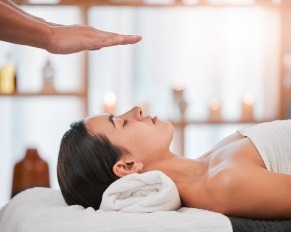It’s natural and understandable to want a path to health that encompasses the whole body. The body, the mind, and…


It’s natural and understandable to want a path to health that encompasses the whole body. The body, the mind, and…
The rise of wearable technology has ushered in a new era of personal health monitoring. Among these devices, health tracking…

Caring for a Loved One with Diabetes: Tips for Family Members November marks National Diabetes Month, a time to raise…

In an age where technology and modern medicine dominate the healthcare landscape, there’s a growing movement steering back to the…
 Medically speaking, it’s an infection of the outer ear canal. Most people know it as ‘swimmer’s ear.’ The problem with this title is that it’s not very descriptive. In fact, it’s even deceptive. Many people think that, because they’re not swimmers, or because they don’t swim very often, they won’t get swimmer’s ear. But that couldn’t be further from the truth. If you’re someone who showers or bathes (and hopefully you are), you can get swimmer’s ear. Though it is true that swimmers tend to experience it more often (hence, the name), it’s also true that all it takes is one time of excessive moisture to get into your ear for you to develop an outer ear canal infection. The symptoms of swimmer’s ear are easy to know, and of swimmer’s ear treatments, there are several. If you’re experiencing any of these symptoms, you likely have swimmer’s ear: redness in the ear canal; pain in the ear canal; discharge from the ear, either an odorless, colorless fluid, or in more severe cases, pus discharge; muffled hearing; full feeling within the ear (caused by swelling and/or blockage). If you’re experiencing any of the following symptoms, your swimmer’s ear infection has progressed, and it’s important to see a doctor: severe pain that may have radiated to face, neck, inside the head; fever; swelling of lymph nodes. The good news, though, about swimmers ear is that there are home remedies that can reduce or even eliminate your symptoms.
Medically speaking, it’s an infection of the outer ear canal. Most people know it as ‘swimmer’s ear.’ The problem with this title is that it’s not very descriptive. In fact, it’s even deceptive. Many people think that, because they’re not swimmers, or because they don’t swim very often, they won’t get swimmer’s ear. But that couldn’t be further from the truth. If you’re someone who showers or bathes (and hopefully you are), you can get swimmer’s ear. Though it is true that swimmers tend to experience it more often (hence, the name), it’s also true that all it takes is one time of excessive moisture to get into your ear for you to develop an outer ear canal infection. The symptoms of swimmer’s ear are easy to know, and of swimmer’s ear treatments, there are several. If you’re experiencing any of these symptoms, you likely have swimmer’s ear: redness in the ear canal; pain in the ear canal; discharge from the ear, either an odorless, colorless fluid, or in more severe cases, pus discharge; muffled hearing; full feeling within the ear (caused by swelling and/or blockage). If you’re experiencing any of the following symptoms, your swimmer’s ear infection has progressed, and it’s important to see a doctor: severe pain that may have radiated to face, neck, inside the head; fever; swelling of lymph nodes. The good news, though, about swimmers ear is that there are home remedies that can reduce or even eliminate your symptoms.